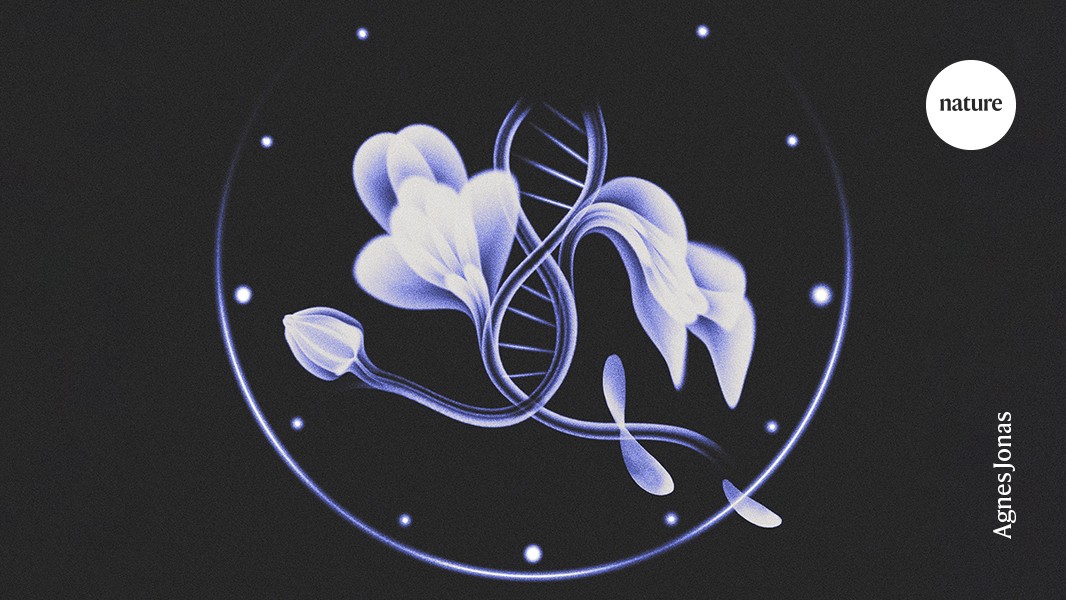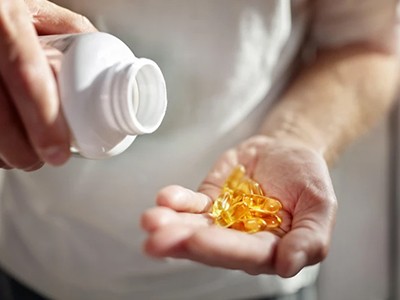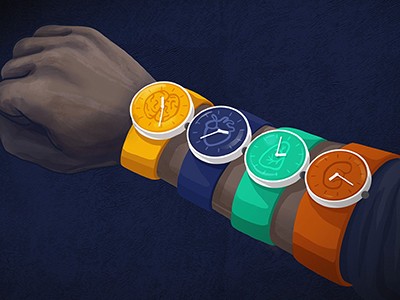If the number of on-camera screams is any indication, Kim Kardashian’s first encounter with epigenetics was a thrilling one.
The reality-television star and her family shrieked and squealed in the season finale of The Kardashians in Los Angeles, California, last July as they each learnt the results of a commercial blood test that purportedly assessed their “biological ages”. Although Kardashian was 43, the placement of chemical markers on her DNA — her ‘epigenetic profile’ — matched that of a 34-year-old, according to the test. Her body, moreover, was ageing 18% more slowly than most people of her age.
“You should give yourself a pat on the back,” said Matthew Dawson as he relayed the results. (Dawson is chief executive of TruDiagnostic in Lexington, Kentucky, the company that sells the test.)
On the other side of the country, neuropsychologist Terrie Moffitt says she was “mortified” when she saw the segment. Moffitt, who works at Duke University in Durham, North Carolina, had spent decades with her colleagues collecting data from around 1,000 people to create the basis for one of the tests provided by TruDiagnostic. She had hoped that her work might one day inform medical decisions or provide a way for researchers to assess whether an anti-ageing treatment is having a positive effect on health. A stunt on a reality-TV show was not the kind of publicity she was aiming for. “I have a snob’s view of reality TV,” she adds.
Omega-3 supplements slow biological ageing
Mixed feelings of enthusiasm and apprehension were common among researchers who spoke to Nature about efforts to develop tests that measure the impact of ageing on the body. With money pouring into the field and an unprecedented level of public attention and excitement, scientists are publishing a steady stream of papers on ways to measure how rapidly a person’s body is declining. Many of the measures look at chemical marks on DNA known as methylation, or at proteins or metabolites that can be found in the blood. These biological markers, or biomarkers, could prove incredibly useful as part of burgeoning efforts to develop drugs and other therapies that would forestall the negative effects of ageing and increase what gerontologists refer to as the healthy lifespan.
Often, however, test results that use these biomarkers are interpreted and presented without a full reckoning of the uncertainties that plague them. It’s a problem not just for commercial tests, but also for media articles and even scientific publications. “There’s a lot of confusion,” says Brian Chen, a molecular epidemiologist at California Pacific Medical Center Research Institute in San Francisco. “I’ve seen, in academia, scientists trying to promote and hype up ‘biological age’ and ageing research in general to generate more interest and funding.”
Chen and others worry about the risk of elevated expectations as scientists take on the long and arduous task of validating these tests. “Whether or not at the end of the day this kind of thing is going to be positive or negative for the field is hard to know,” says Matt Kaeberlein, chief executive at Optispan, a health-care technology company in Tukwila, Washington. “If you lose your reputation, that’s hard to get back.”
Marking time
For the moment, the field is on fire. In December 2024, the US Advanced Research Projects Agency for Health announced a programme to develop and validate biomarkers of ageing. Hevolution Foundation, a charity in Riyadh, has invested US$400 million in healthspan research. And organizers of XPRIZE Healthspan — a competition to find treatments for conditions associated with ageing — are planning a 7-year, $101-million global competition that is dedicated to improving healthspan.
A smorgasbord of tests to assess ageing already exists. Geneticist Steve Horvath, now at Altos Labs in Cambridge, UK, developed one of the first epigenetic clocks more than a decade ago1. He analysed data from 7,800 samples to catalogue which sites in the genome were tagged with methyl groups — a chemical modification to DNA that helps to regulate the expression of genes. He then fed these data, along with the ages of the study participants, into a machine-learning algorithm. The algorithm produced a collection of 353 methylation sites that, taken together, correlated with participants’ chronological ages. Some of these sites were more methylated with age; others were less so.
Those markers became the basis for a test that can predict a person’s chronological age with remarkable accuracy, says Chen, who worked with Horvath. But the test was not as good at predicting how long a person might expect to remain healthy, or when they might die.
So, Horvath’s team and others began to build new tests, searching for methylation sites that correlate with other age- and health-related measures, such as white-blood-cell counts, the amount of glucose in the blood and levels of a protein that serves as a marker for inflammation2. This time, the goal was to create a clock that reflected a person’s time to death, rather than merely the number of years lived.
Pregnancy advances your ‘biological’ age — but giving birth turns it back
A younger ‘age’ based on this test tended to associate with a variety of lifestyle factors, including high income and a diet rich in fruits and vegetables. An older age score was associated with factors such as cigarette smoking or the risk of heart disease, among other ailments.
Moffitt and her colleagues took this a step further, returning to the same study participants every few years to collect a fresh round of health data3. This allowed them to create an epigenetic test that assessed the rate at which age takes its toll on the body, rather than one static number. “It’s capturing the slow, gradual progression of biological decline,” Moffitt says.
The biology underlying these tests, however, remains a puzzle. There is no clear mechanism that links the patterns of methylation measured in the tests with changes in a person’s health — the patterns are simply correlations fished out from large data sets, with no obvious cause. “Why did the methylation go up, and what went wrong?” asks Horvath. “What does it mean?”
Other kinds of test can provide a clearer link to mechanisms. Those that measure changes in the abundance of certain proteins or in the chemical products of metabolism allow researchers to draw conclusions about what triggered the change. “This is why I chose metabolomics,” says Eline Slagboom, a molecular epidemiologist at Leiden University Medical Center in the Netherlands, referring to tests that try to survey all of the metabolites in an organism or tissue. “When we have a marker, we also understand a little about why it is important: is it an inflammation marker, a lipid marker? Is it related to glucose?”
Slagboom and her colleagues created a test called MetaboHealth, which is based on 14 metabolites found in the blood that correlate with the likelihood of death from disease4. Others have turned to tests based on proteins: a team led by UK researchers developed one using data from more than 45,000 people that measures the levels of around 200 proteins in blood5.
Turning back time with epigenetic clocks
For now, however, some researchers are forgoing molecular biomarkers in their clinical trials. Therapies, interventions or lifestyle changes aimed at extending a person’s healthy lifespan must come with a measurable benefit, says Jamie Justice, a gerontologist in Grand Junction, Colorado, who is executive vice-president of health at the XPRIZE Foundation in Culver City, California. “When we talk about that benefit, we’re talking about the way that a person functions, feels or survives” — not simply the chemical composition of their DNA, she says. Experimental therapies tested in the XPRIZE Healthspan programme will not be evaluated on the basis of epigenetic tests. Instead, the competition will focus on factors such as muscle strength and cognition, as well as assays for immune function.
The prize will be structured so that teams gather data and samples in a standardized way. Justice also hopes to raise funds for a competition in which teams develop and test other biomarkers using those data. “I love biomarkers,” she says. “I love them and I hate them, because I know how hard it is to actually get one developed.”
Seeking validation
Researchers sometimes recoil when they learn just how much work it takes to vet a biomarker fully so it can be used in clinical trials, says Mahdi Moqri, a computational biologist at Harvard Medical School in Boston, Massachusetts. Such tests must be studied repeatedly in a variety of populations, and under the specific conditions in which they will be used in the clinic. A biomarker of ageing that is based on data from people in their forties and fifties, for example, might have little relevance to a frail 80-year-old who has multiple health conditions, says Slagboom. “We have a tendency to try to sell how valuable our marker is,” she says. “But valuable for which purpose?”
The hype surrounding ageing research has also created a false impression of how well tested the markers have been in different populations, or in different settings, says Moqri. Although epigenetic-clock markers have been used in a vast range of studies, they typically have not been sufficiently validated for use as primary outcomes in clinical trials, he says. “Even those who are running clinical trials, they think that these biomarkers are more advanced than they actually are,” he says.
There is also disagreement in the field about what the clocks really measure. Despite frequent references to ‘biological age’ in both the media and scientific articles, a 2024 study found little agreement in the community as to what the term means6. In a survey of more than 100 participants at a scientific conference on ageing research, about 30% defined ageing as the loss of function that comes with time. Other definitions included the accumulation of damage with time; a developmental stage; and an increase in disability and death. “Defining biological age is a whole touchy subject in itself,” says Marije Sluiskes, a biostatistician at Leiden University Medical Center.





